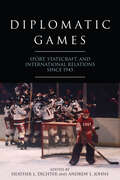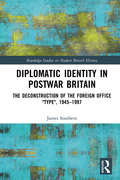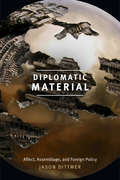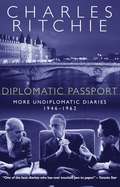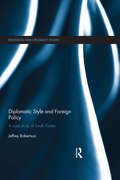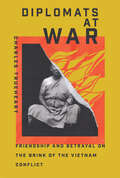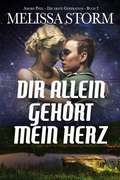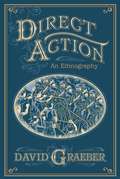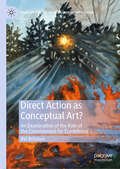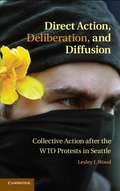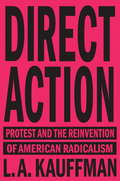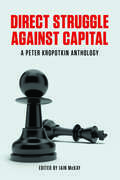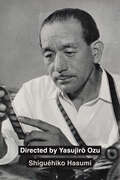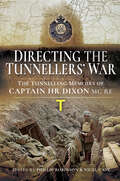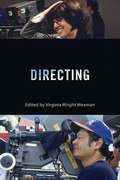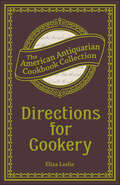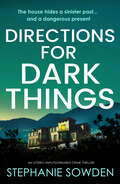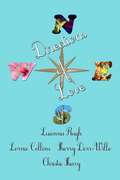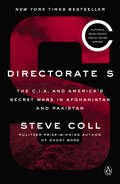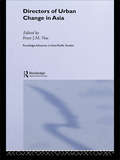- Table View
- List View
Diplomatic Games: Sport, Statecraft, and International Relations since 1945 (Studies In Conflict, Diplomacy And Peace Ser.)
by Heather L. Dichter & Andrew L. JohnsInternational sporting events, including the Olympic Games and the FIFA World Cup, have experienced profound growth in popularity and significance since the mid-twentieth century. Sports often facilitate diplomacy, revealing common interests across border
Diplomatic Identity in Postwar Britain: The Deconstruction of the Foreign Office "Type", 1945–1997 (Routledge Studies in Modern British History)
by James SouthernThis book seeks to understand the complex ways in which the Foreign Office adapted to the rise of identity politics in Britain as it administered British foreign policy during the Cold War and the end of the British Empire. After the Second World War, cultural changes in British society forced a reconsideration of erstwhile diplomatic archetypes, as restricting recruitment to white, heterosexual, upper- or middle-class men gradually became less socially acceptable and less politically expedient. After the advent of the tripartite school system and then mass university education, the Foreign Office had to consider recruiting candidates who were qualified but had not been ‘socialized’ in the public schools and Oxbridge. Similarly, the passage of the 1948 Nationality Act technically meant nonwhites were eligible to join. The rise of the gay rights movement and postwar women’s liberation both generated further, unique dilemmas for Foreign Office recruiters. Diplomatic Identity in Postwar Britain seeks to destabilize concepts like 'talent', 'merit', 'equality' and 'representation', arguing that these were contested ideas that were subject to political and cultural renegotiation and revision throughout the period in question.
Diplomatic Material: Affect, Assemblage, and Foreign Policy
by Jason DittmerIn Diplomatic Material Jason Dittmer offers a counterintuitive reading of foreign policy by tracing the ways that complex interactions between people and things shape the decisions and actions of diplomats and policymakers. Bringing new materialism to bear on international relations, Dittmer focuses not on what the state does in the world but on how the world operates within the state through the circulation of humans and nonhuman objects. From examining how paper storage needs impacted the design of the British Foreign Office Building to discussing the 1953 NATO decision to adopt the .30 caliber bullet as the standard rifle ammunition, Dittmer highlights the contingency of human agency within international relations. In Dittmer's model, which eschews stasis, structural forces, and historical trends in favor of dynamism and becoming, the international community is less a coming-together of states than it is a convergence of media, things, people, and practices. In this way, Dittmer locates power in the unfolding of processes on the micro level, thereby reconceptualizing our understandings of diplomacy and international relations.
Diplomatic Passport: More Undiplomatic Diaries, 1946-1962
by Charles RitchieIn his first book, The Siren Years, the public was introduced to Charles Ritchie as a young diplomat serving with the Canadian Embassy in wartime London. In Diplomatic Passport, we follow his career as he climbs the rungs of the diplomatic-service ladder – as an advisor to the Canadian Delegation to the Paris Peace Conference in 1946; as a Counsellor at the Canadian Embassy in Paris, where his friends celebrate Ritchie Week – to the city’s surprise; as Assistant, Deputy, and Acting Under-Secretary of State for External Affairs in Ottawa; as Canadian Ambassador to Bonn, where he finds himself reciting Little Red Riding Hood in German at a state dinner; and as Permanent Ambassador of Canada to the United Nations.
Diplomatic Style and Foreign Policy: A Case Study of South Korea (Routledge New Diplomacy Studies)
by Jeffrey RobertsonThe book explores diplomatic style and its use as a means to provide analytical insight into a state’s foreign policy, with a specific focus on South Korea. Diplomatic style attracts scant attention from scholars. It is dismissed as irrelevant in the context of diplomacy’s universalism; misconstrued as a component of foreign policy; alluded to perfunctorily amidst broader considerations of foreign policy; or wholly absented from discussions in which it should comprise an important component. In contrast to these views, practitioners maintain a faith-like confidence in diplomatic style. They assume it plays an important role in providing analytical insight, giving them advantage over scholars in the analysis of foreign policy. This book explores diplomatic style and its use as a means to provide analytical insight into foreign policy, using South Korea as a case study. It determines that style remains important to diplomatic practitioners, and provides analytical insight into a state’s foreign policy by highlighting phenomena of policy relevance, which narrows the range of information an analyst must cover. The book demonstrates how South Korea’s diplomatic style – which has a tendency towards emotionalism, and is affected by status, generational change, cosmopolitanism, and estrangement from international society – can be a guide to understanding South Korea’s contemporary foreign policy. This book will be of much interest to students of diplomacy studies, foreign policy, Asian politics, and International Relations in general.
Diplomats at War: Friendship and Betrayal on the Brink of the Vietnam Conflict (Miller Center Studies on the Presidency)
by Charles TrueheartFor two Americans in Saigon in 1963, the personal and the political combine to spark the drama of a lifetime Before it spread into a tragic war that defined a generation, the conflict in Vietnam smoldered as a guerrilla insurgency and a diplomatic nightmare. Into this volatile country stepped Frederick &“Fritz&” Nolting, the US ambassador, and his second-in-command, William &“Bill&” Trueheart, immortalized in David Halberstam&’s landmark work The Best and the Brightest and accidental players in a pivotal juncture in modern US history.Diplomats at War is a personal memoir by former Washington Post reporter Charles Trueheart—Bill&’s son and Nolting&’s godson—who grew up amid the events that traumatized two families and an entire nation. The book embeds the reader at the US embassy and dissects the fateful rift between Nolting and Trueheart over their divergent assessments of the South Vietnamese regime under Ngo Dinh Diem, who would ultimately be assassinated in a coup backed by the United States. Charles Trueheart retells the story of the United States&’ headlong plunge into war from an entirely new vantage point—that of a son piecing together how his father and godfather participated in, and were deeply damaged by, this historic flashpoint. Their critical rupture, which also destroyed their close friendship, served as a dramatic preface to the United States&’ disastrous involvement in the Vietnam conflict.Winner of the American Academy of Diplomacy Douglas Dillon Award
Dir allein gehört mein Herz
by Melissa Storm Annika MirwaldKönnen zwei gebrochene Herzen einander heilen? Jeden Tag kämpft Rip Rockwell gegen furchtbare Schuldgefühle an - die Schuld, noch am Leben zu sein, während sein bester Freund im Kampf gefallen ist - und auch gegen sein Kriegstrauma. Beides hält ihn gefangen und hindert ihn daran, sich wieder ein normales, bürgerliches Leben aufzubauen. Als er in seiner neuen Nachbarschaft auf eine wunderschöne junge Frau trifft, kämpft er auch gegen die wachsenden Gefühle zu ihr an. Immerhin ist er schuld daran, dass sein bester Freund gestorben ist, daher steht es ihm nicht zu, glücklich zu werden. Deborah Walker hat ihr Herz an einen Mann verschenkt, der während seinem Einsatz in Korea spurlos verschwunden ist. Obwohl sie ihm versprochen hat, auf seine Rückkehr zu warten, hat sie keine Ahnung, ob er überhaupt noch am Leben ist, oder für immer verschollen. Als dann auch noch ein attraktiver junger Veteran in ihre Nachbarschaft zieht, leugnet sie zunächst, wie intensiv sie sich zu ihm hingezogen fühlt, insbesondere weil er sie so sehr an den Mann erinnert, den sie bereits verloren hat. Können Rip und Deborah gemeinsam einen Weg finden, ihre Wunden zu heilen, oder müssen sie sich dem Schicksal ihrer gebrochenen Herzen fügen?
Dire Straits
by Elizabeth Jane BellamyEngland became a centrally important maritime power in the early modern period, and its writers - acutely aware of their inhabiting an island - often depicted the coastline as a major topic of their works. However, early modern English versifiers had to reconcile this reality with the classical tradition, in which the British Isles were seen as culturally remote compared to the centrally important Mediterranean of antiquity. This was a struggle for writers not only because they used the classical tradition to legitimate their authority, but also because this image dominated cognitive maps of the oceanic world.As the first study of coastlines and early modern English literature, Dire Straits investigates the tensions of the classical tradition's isolation of the British Isles from the domain of poetry. By illustrating how early modern English writers created their works in the context of a longstanding cultural inheritance from antiquity, Elizabeth Jane Bellamy offers a new approach to the history of early modern cartography and its influences on literature.
Direct Action
by David GraeberAnthropologist David Graeber undertakes the first detailed ethnographic study of the global justice movement. The case study at the center of Direct Action is the organizing and events that led to the one of the most dramatic and militant mass protests in recent years--against the Summit of the Americas in Québec City. Written in a clear, accessible style (with a minimum of academic jargon), this study brings readers behind the scenes of a movement that has changed the terms of debate about world power relations. From informal conversations in coffee shops to large "spokescouncil" planning meetings and tear gas-drenched street actions, Graeber paints a vivid and fascinating picture.Along the way, he addresses matters of deep interest to anthropologists: meeting structure and process, language, symbolism and representation, the specific rituals of activist culture, and much more. Starting from the assumption that, when dealing with possibilities of global transformation and emerging political forms, a disinterested, "objective" perspective is impossible, Graeber writes as both scholar and activist. At the same time, his experiment in the application of ethnographic methods to important ongoing political events is a serious and unique contribution to the field of anthropology, as well as an inquiry into anthropology's political implications.David Graeber is an anthropologist and activist who teaches at the University of London. Active in numerous direct-action political organizations, he has written for Harper's Magazine and is the author of Fragments of an Anarchist Anthropology, Towards an Anthropological Theory of Value, and Possibilities.
Direct Action as Conceptual Art?: An Examination of the Role of the Communiqué for Ecodefense (Palgrave Studies in Crime, Media and Culture)
by Avi BrismanThis book offers an avenue for understanding the parameters, scope, meanings, and impacts of environmental protest. Focusing on ecodefense, it explores the significance of the communiqué (the written explanation of the reasons for an act of ecodefense), comparing the communiqué to written texts in Conceptual art. It presents and seeks to evaluate the following analogy: act of ecodefense : communiqué :: work of conceptual art : written declaration/statement. By considering the communiqué in this light, this book helps us better comprehend the rationales for “radical environmentalism” undertaken for the purposes of reducing environmental harms, natural resource exploitation, and animal abuse.
Direct Action, Deliberation, and Diffusion
by Lesley J. WoodWhat are the micro-level interactions and conversations that underlie successful and failed diffusion? By comparing the spread of direct action tactics from the 1999 Global Justice Movement protests against the World Trade Organization in Seattle to grassroots activists in Toronto and New York, Lesley Wood argues that dynamics of deliberation among local activists both aided and blocked diffusion. To analyze the localization of this cycle of protest, the research brings together rich ethnography, interviews, social network analysis, and catalogs of protest events. The findings suggest that when diverse activists with different perspectives can discuss innovations in a reflexive, egalitarian manner, they are more likely to make strategic and meaningful choices.
Direct Action: Protest and the Reinvention of American Radicalism
by L. A. KauffmanA longtime movement insider's powerful account of the origins of today's protest movements and what they can achieve now As Americans take to the streets in record numbers to resist the presidency of Donald Trump, L.A. Kauffman’s timely, trenchant history of protest offers unique insights into how past movements have won victories in times of crisis and backlash and how they can be most effective today. This deeply researched account, twenty-five years in the making, traces the evolution of disruptive protest since the Sixties to tell a larger story about the reshaping of the American left. Kauffman, a longtime grassroots organizer, examines how movements from ACT UP to Occupy Wall Street to Black Lives Matter have used disruptive tactics to catalyze change despite long odds. Kauffman's lively and elegant history is propelled by hundreds of candid interviews conducted over a span of decades. Direct Action showcases the voices of key players in an array of movements – environmentalist, anti-nuclear, anti-apartheid, feminist, LGBTQ, anti-globalization, racial-justice, anti-war, and more – across an era when American politics shifted to the right, and a constellation of decentralized issue- and identity-based movements supplanted the older ideal of a single, unified left. Now, as protest movements again take on a central and urgent political role, Kauffman’s history offers both striking lessons for the current moment and an unparalleled overview of the landscape of recent activism. Written with nuance and humor, Direct Action is essential reading for anyone interested in understanding the protest movements of our time. Product Alert: Book will have either a neon magenta cover or a neon green cover. Color is not selectable.
Direct Democracy: The Politics of Initiative, Referendum, and Recall
by Thomas E. CroninBallot democracy, populist democracy, democracy by initiative, referendum, and recall-however one labels it-is only one hundred years old in the United States and has been in and out of fashion during that time. At the writing of this book there was a resurgence of interest in new kinds of forces trying to overturn legislative and executive fiat by direct ballot. In this book Thomas Cronin suggests why this is so, how it is working, and what should be done.
Direct From Dell
by Catherine Fredman Michael DellAt nineteen, Michael Dell started his company as a freshman at the University of Texas with $1,000 and has since built an industry powerhouse. As Dell journeys through his childhood adventures, ups and downs, and mistakes made along the way, he reflects on invaluable lessons learned. Michael Dell's revolutionary insight has allowed him to persevere against all odds, and Direct from Dell contains valuable information for any business leader. His strategies will show you effective ways to grow your business and will help you save time on costly mistakes by following his direct model for success.
Direct Healing
by Paul Ellsworth"Direct Healing" by Paul Ellsworth is a transformative and enlightening guide that delves into the powerful world of natural healing and holistic wellness. Ellsworth, a renowned healer and spiritual teacher, shares his profound insights and practical techniques for harnessing the body's innate ability to heal itself through direct, intentional practices.In this compelling work, Ellsworth explores the principles and methods of direct healing, a holistic approach that emphasizes the connection between mind, body, and spirit. He provides readers with a comprehensive understanding of how to activate and utilize their inner healing potential to overcome physical, emotional, and spiritual ailments.Ellsworth's narrative is both accessible and profound, making complex healing concepts easy to understand and apply. He covers a wide range of topics, including the role of energy in healing, the power of positive thinking, and the importance of maintaining a balanced and healthy lifestyle. Through detailed explanations and step-by-step instructions, readers learn how to perform direct healing techniques such as meditation, visualization, and energy work."Direct Healing" also includes inspiring case studies and personal anecdotes that illustrate the effectiveness of these techniques in real-life situations. Ellsworth's compassionate and encouraging tone empowers readers to take charge of their own health and well-being, offering practical tools for achieving lasting healing and transformation.This book is an invaluable resource for anyone seeking to enhance their health and wellness through natural and holistic means. Whether you are new to the concept of direct healing or an experienced practitioner, Ellsworth's insights and methods provide a powerful framework for achieving optimal health and spiritual growth.Paul Ellsworth's "Direct Healing" is a must-read for holistic health enthusiasts, spiritual seekers, and anyone interested in exploring the incredible healing potential within. It stands as a testament to the power of self-healing and the profound impact it can have on one's life, offering a path to true and lasting wellness.
Direct Struggle Against Capital
by Peter Kropotkin Iain MckayThis is the most extensive collection of Peter Kropotkin's writings available in English. Over half the selections have been translated for the first time or salvaged from long-out-of-print pamphlets and newspapers. Both an introduction to classic texts and a recontextualization of Kropotkin from saintly philosopher to dangerous revolutionary, Direct Struggle Against Capital includes a historical introduction, biographical sketch, glossary, bibliography, and index.Peter Kropotkin was one of anarchism's most famous thinkers. His classic works include The Conquest of Bread and Mutual Aid: A Factor of Evolution.Iain McKay has edited An Anarchist FAQ (volumes one and two) and Property Is Theft: A Pierre-Joseph Proudhon Anthology.
Directed by Yasujiro Ozu
by Shiguéhiko HasumiFirst published in 1983, Shiguéhiko Hasumi's Directed by Yasujirō Ozu has become one of the most influential books on cinema written in Japanese. This pioneering translation brings Hasumi's landmark work to an English-speaking public for the first time, inviting a new readership to engage with this astutely observed, deeply moving meditation on the oeuvre of one of the giants of world cinema. Complemented by a critical introduction from acclaimed film scholar Aaron Gerow and rendered fluidly in Ryan Cook's agile translation, this volume will grace the shelves of cinephiles for many years to come.
Directing the Tunnellers' War: The Tunnelling Memoirs of Captain H Dixon MC RE
by Nigel Cave and Phillip RobinsonA first-hand account of the underground work of the First World War—from the firing of mines to constructing subways to bureaucratic mishaps.With a background in mining and tunneling, Major H. R. Dixon was transferred to GHQ in Montreuil to handle mining plans and records. In due course he was appointed to a small group of Royal Engineers’ officers who operated as the eyes and ears of the Inspector of Mines. His activity in this role is particularly important for the period after the June 1917 Messines Offensive, when the use of mining for blows against the enemy substantially diminished—indeed, all but disappeared—and the tunneling companies were reallocated to a new range of tasks.Dixon was at the centre of staff activity that set about countering the effects of the German Kaiserslacht offensives in March, April and May 1918, and the preparations for a possible German breakthrough to the channel ports. Subsequently, with the allied advances of the ‘Last Hundred Days’, he became considerably occupied by the hazards of dealing with delayed action mines and booby traps.His manuscript, produced in 1933, remained no more than a draft until it was rescued some time ago by one of the editors from the Royal Engineers’ archives at Chatham. It recounts, by means of numerous humorous anecdotes, the personalities and work of the staff at GHQ, ranging from humble clerks and the misdemeanors of his batman to senior officers. He brings to life the exceptional endeavours of the often maligned senior staff and the individual characteristics of many senior staff officers who are otherwise but shadows in accounts of the Great War.
Directing: Behind The Silver Screen: A Modern History Of Filmmaking (Behind the Silver Screen Series)
by Sarah Kozloff William Luhr J. D. Connor Professor Charlie Keil Virginia Wright Wexman Daniel LangfordWhen a film is acclaimed, the director usually gets the lion’s share of the credit. Yet the movie director’s job—especially the collaborations and compromises it involves—remains little understood. The latest volume in the Behind the Silver Screen series, this collection provides the first comprehensive overview of how directing, as both an art and profession, has evolved in tandem with changing film industry practices. Each chapter is written by an expert on a different period of Hollywood, from the silent film era to today’s digital filmmaking, providing in-depth examinations of key trends like the emergence of independent production after World War II and the rise of auteurism in the 1970s. Challenging the myth of the lone director, these studies demonstrate how directors work with a multitude of other talented creative professionals, including actors, writers, producers, editors, and cinematographers. Directing examines a diverse range of classic and contemporary directors, including Orson Welles, Tim Burton, Cecil B. DeMille, Steven Soderbergh, Spike Lee, and Ida Lupino, offering a rich composite picture of how they have negotiated industry constraints, utilized new technologies, and harnessed the creative contributions of their many collaborators throughout a century of Hollywood filmmaking.
Directions for Cookery: Being a System of the Art, in Its Various Branches
by Eliza LeslieWritten by Eliza Leslie, or Miss Leslie as she was commonly called, Directions for Cookery was undoubtedly the most popular cookbook in the 19th century. Published in 1837 in Philadelphia, this clear, concise, and elegant cookbook emphasized the nuances of good cooking, the importance of specific measurements—not always a common practice at that time—and the significance of good ingredients to prepare the best food in the kitchen. Directions for Cookery is surely an American classic. With recipes for Beef-Steak Pudding, Moravian Sugar Cakes, Cat-Fish Soup, Johnny Cake, Indian Pudding, Molasses Candy, New York Cookies, Pumpkin Chips, Tomato Catchup, and Election Cake, Directions for Cookery sparks your appetite and makes this classic culinary work an invaluable addition to any kitchen. This edition of Directions for Cookery was reproduced by permission from the volume in the collection of the American Antiquarian Society, Worcester, Massachusetts. Founded in 1812 by Isaiah Thomas, a Revolutionary War patriot and successful printer and publisher, the society is a research library documenting the lives of Americans from the colonial era through 1876. The society collects, preserves, and makes available as complete a record as possible of the printed materials from the early American experience. The cookbook collection comprises approximately 1,100 volumes.
Directions for Cookery: Being a System of the Art, in Its Various Branches
by Eliza LeslieWritten by Eliza Leslie, or Miss Leslie as she was commonly called, Directions for Cookery was undoubtedly the most popular cookbook in the 19th century. Published in 1837 in Philadelphia, this clear, concise, and elegant cookbook emphasized the nuances of good cooking, the importance of specific measurements—not always a common practice at that time—and the significance of good ingredients to prepare the best food in the kitchen. Directions for Cookery is surely an American classic. With recipes for Beef-Steak Pudding, Moravian Sugar Cakes, Cat-Fish Soup, Johnny Cake, Indian Pudding, Molasses Candy, New York Cookies, Pumpkin Chips, Tomato Catchup, and Election Cake, Directions for Cookery sparks your appetite and makes this classic culinary work an invaluable addition to any kitchen. This edition of Directions for Cookery was reproduced by permission from the volume in the collection of the American Antiquarian Society, Worcester, Massachusetts. Founded in 1812 by Isaiah Thomas, a Revolutionary War patriot and successful printer and publisher, the society is a research library documenting the lives of Americans from the colonial era through 1876. The society collects, preserves, and makes available as complete a record as possible of the printed materials from the early American experience. The cookbook collection comprises approximately 1,100 volumes.
Directions for Dark Things: An utterly unputdownable crime thriller
by Stephanie Sowden‘There was a history in this house, secrets he hadn’t even got close to scratching the surface of…’ Something peculiar is going on at The Lloyd Estate. The enormous house and its vast grounds are rarely seen by outsiders. Only Audrey Lloyd – the cantankerous elderly owner and only daughter to the famed movie mogul who built the mansion – knows of the suffocating darkness that has settled on the place. Property developers have come to Audrey over the decades. Countless times they have been rebuffed. Now, she agrees to sell to ambitious broker Terri Nicholls. But Terri has to trade something of her own in return. Detective Don Vernon is on the brink of retirement. Instead, he is about to be caught in a web of lies; one which Audrey has been spinning for decades. Can those who cross the threshold make it out again intact? A scintillating tale of revenge, cruelty and the many forms of wickedness, Directions for Dark Things is perfect for fans of Catriona Ward and Simone St. James.
Directions of Love
by Christie Shary Lorna CollinsBest friends Kimi, Melinda, Jacque, and Lilianna grew up in Aspen Grove, Colorado, but went in separate directions after high school. Now they're invited to their twentieth high school reunion. They want to see each other again, but will they attend, and what stories will they have to share? Finding Love in Paradise by Lorna Collins When Kimi McGuire goes to Hawaii to discover her Hawaiian roots, she also finds Jason Nakagiri, a good-looking Hawaiian surfer who steals her heart. But is he truly the love of her life or just her dream of a soul mate? Love South of the Border Style by Christie Shary Melinda Miller falls hard while on a vacation in Mexico, but when he doesn't call, she believes her one chance at happiness has died. Is Juan Carlos merely a summer romance as she fears, or can their love survive time and distance? Love, Wisconsin Style by Sherry Derr-Wille Jacque Harris dreams of living in Scandinavia working as a translator, but a hasty marriage kills her dreams, trapping her in Wisconsin. Now divorced, is Bryan Chapman, the guy she meets in the grocery store, the start of the relationship of her dreams? Love Under the Northern Lights by Luanna Rugh Lilianna Anderson left town in humiliation the day after high school graduation, vowing never to return, but her mother's sixty-fifth birthday can't be ignored. When she runs into Russ Anthony, the high school sweetheart who betrayed her, can she find love again? Genre: Romance/Anthology
Directorate S: The C.I.A. and America's Secret Wars in Afghanistan and Pakistan
by Steve Coll<P>Resuming the narrative of his Pulitzer Prize-winning Ghost Wars, bestselling author Steve Coll tells for the first time the epic and enthralling story of America's intelligence, military, and diplomatic efforts to defeat Al Qaeda and the Taliban in Afghanistan and Pakistan since 9/11 <P>Prior to 9/11, the United States had been carrying out small-scale covert operations in Afghanistan, ostensibly in cooperation, although often in direct opposition, with I.S.I., the Pakistani intelligence agency. While the US was trying to quell extremists, a highly secretive and compartmentalized wing of I.S.I., known as "Directorate S," was covertly training, arming, and seeking to legitimize the Taliban, in order to enlarge Pakistan's sphere of influence. <P> After 9/11, when fifty-nine countries, led by the U. S., deployed troops or provided aid to Afghanistan in an effort to flush out the Taliban and Al Qaeda, the U.S. was set on an invisible slow-motion collision course with Pakistan. <P>Today we know that the war in Afghanistan would falter badly because of military hubris at the highest levels of the Pentagon, the drain on resources and provocation in the Muslim world caused by the U.S.-led invasion of Iraq, and corruption. But more than anything, as Coll makes painfully clear, the war in Afghanistan was doomed because of the failure of the United States to apprehend the motivations and intentions of I.S.I.'s "Directorate S". <P>This was a swirling and shadowy struggle of historic proportions, which endured over a decade and across both the Bush and Obama administrations, involving multiple secret intelligence agencies, a litany of incongruous strategies and tactics, and dozens of players, including some of the most prominent military and political figures. A sprawling American tragedy, the war was an open clash of arms but also a covert melee of ideas, secrets, and subterranean violence. <P>Coll excavates this grand battle, which took place away from the gaze of the American public. With unsurpassed expertise, original research, and attention to detail, he brings to life a narrative at once vast and intricate, local and global, propulsive and painstaking. This is the definitive explanation of how America came to be so badly ensnared in an elaborate, factional, and seemingly interminable conflict in South Asia. <P>Nothing less than a forensic examination of the personal and political forces that shape world history, Directorate S is a complete masterpiece of both investigative and narrative journalism. <P><b>A New York Times Bestseller</b>
Directors of Urban Change in Asia (Routledge Advances in Asia-Pacific Studies)
by Peter J.M.NasBringing together a group of international scholars, Directors of Urban Change in Asia examines who the 'directors' for urban change are in an eclectic mix of Asian cities. The books discusses how, in the majority of cases, urban change has come about primarily as the result of visionary leaders, on national, regional and local levels. It also makes clear that the less successful cities have tended to lack such leaders.
